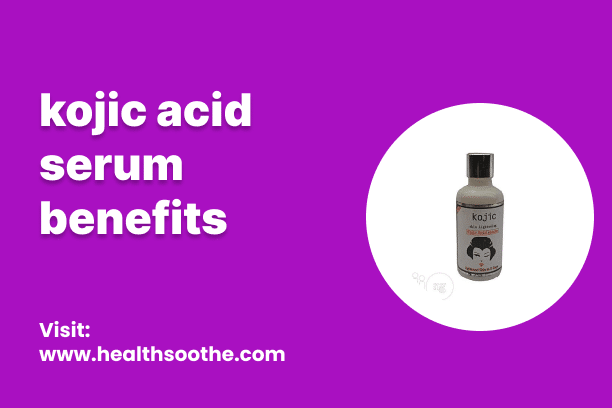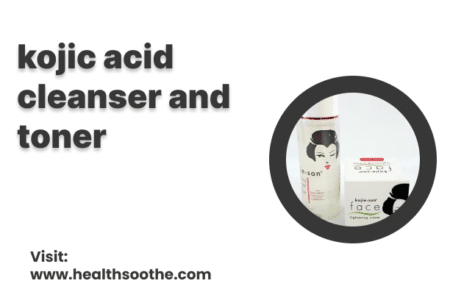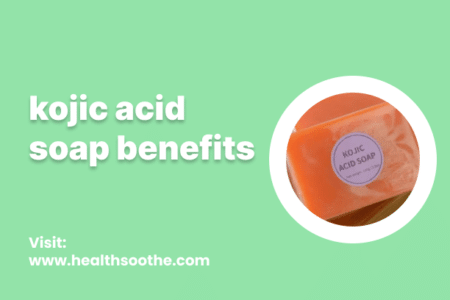Kojic acid serums typically refer to skincare products that contain kojic acid as an active ingredient. Kojic acid is a natural substance derived from various fungi, like mushrooms, and is known for its skin-brightening and pigmentation-reducing properties. Therefore, kojic acid serums are often used to address issues such as dark spots, hyperpigmentation, and uneven skin tone.
Kojic acid is derived from various fungi or through the fermentation process of Japanese rice wine, also known as sake. Dermatologists widely use kojic acid as a potent topical skin-lightening agent for treating hyperpigmentation such as sun spots, age spots, and dark spots, as well as melasma. It falls under the category of plant extracts and is known as a tyrosinase inhibitor, which is a technical term for a skin-lightening agent.
Fun Fact: Kojic acid was discovered in Japan in 1907 and was isolated from a fungus called aspergillus oryzae, also known as kōji mold. This mold is utilized in Japanese food production to saccharify steamed rice, sweet potato, and barley for making alcoholic beverages, as well as fermenting soybeans to produce soy sauce and miso.
Kojic Acid Skin Care Benefits
Natural Skin Lightening Agent
Treats Hyperpigmentation
Your skin color is determined by melanin, a pigment produced when melanocytes convert the enzyme tyrosine into melanin. Issues arise when prolonged exposure to ultraviolet (UV) light accelerates melanin production, causing it to clump and accumulate in high concentrations. This leads to various pigmentation problems like sun spots, age spots, and dark spots.
Kojic acid is utilized in skin-lightening products due to its ability to inhibit the activity of tyrosinase, the enzyme responsible for producing pigment in the skin. Consequently, kojic acid helps diminish abnormal pigmentation such as sun spots, age spots, and dark spots, while also preventing the formation of freckles and pigmentation post-sunburn.
Brightens Complexion
Get the Jlo Glow
Kojic acid brightens your complexion and evens out your skin tone by fading non-normal pigmentation. This action helps your dull skin appear healthier and more vibrant.
Less Aggressive than Hydroquinone
Safe & Still Powerful
Kojic acid is a natural ingredient, making it a safe choice for skin lightening. On the other hand, while hydroquinone also exists naturally, the synthetic version is more commonly used in cosmetics as a stronger skin lightening agent. However, improper or prolonged use of hydroquinone can lead to permanent skin damage, causing a bluish or greyish discoloration. Because of this, the FDA has recommended kojic acid as an excellent alternative to hydroquinone.
Read Also: medications that cause tardive dyskinesia symptoms
Pros and Cons of kojic acid serums
Pros:
- Effective Skin Brightening
- Non-Invasive
- Natural Origin
- Ease of Application
Cons:
- Skin Sensitivity
- Sun Sensitivity
- Slow Results
Differences Between kojic acid serums and Kojic Acid
Kojic Acid:
The raw kojic acid compound is usually available in powder or crystal form. It needs to be properly diluted and incorporated into skincare formulations before application to the skin. It can be used in DIY skincare recipes or by skincare professionals to create customized products.
Kojic Acid Serums:
These are ready-to-use skincare products that are designed for direct application to the skin. They are formulated to deliver a controlled concentration of kojic acid along with other ingredients that enhance its efficacy and minimize potential side effects.
Alternative to kojic acid serums
Hydroquinone-based Serums (with Caution):
Hydroquinone is a potent skin-lightening ingredient available in prescription and over-the-counter formulations. It can be effective for treating stubborn pigmentation issues but should be used under the guidance of a dermatologist due to potential side effects.
How to Apply Kojic Acid
Work up to it
Before using any kojic acid product, it's important to conduct a patch test. Apply a small amount of the product to your forehead in the evening, as this area has thicker skin. Wait for 24 hours; if there's no irritation, you can start using the product as a spot treatment every night. After a week without any issues, you can increase usage to both morning and night for a more aggressive treatment.
For those with sensitive skin, start using the new kojic acid product once or twice a week to ensure your skin can tolerate it. It's advisable for sensitive skin to use kojic acid products with concentrations of 1% or less to avoid irritation.
Apply to entire face or as spot treatment
Kojic acid can be applied directly to areas of hyperpigmentation on your face as a spot treatment. Alternatively, you can apply the kojic acid product to your entire face, being careful to avoid the eye, lip, and mouth areas. Apart from the face, hyperpigmentation can also affect the chest and hands. Thus, you can apply kojic acid to these areas as well, including the tops of your hands and chest.
Follow Up With...
Moisturizer
Remember to hydrate your skin twice daily using a moisturizer! Allow your kojic acid cream or serum to fully dry before applying moisturizer. Applying moisturizer immediately can hinder your skin's absorption of the kojic acid.
Sunscreen
Kojic acid can increase your skin's sensitivity to UV rays and make it more prone to sunburn. Since melanin provides natural protection against sunburn, and kojic acid reduces melanin production, your skin becomes more susceptible to sun damage. Exposure to UV rays without protection can lead to further hyperpigmentation. To prevent this, limit your sun exposure and apply sunscreen daily to safeguard your skin.
Top 3 Kojic Acid Skin Care Products
PCA SKIN - Kojic Acid Pigment Bar
Use 2-3x weekly
Wet the included sponge and create a creamy lather. Gently cleanse the affected area, leaving the lather on the skin for about 2 minutes. Rinse with warm water and pat dry. This product can be used both in the morning and evening.
LA ROCHE-POSAY - Mela-D Pigment Control
Use in AM & PM
Once you've completed your cleansing, exfoliating, toning, and applied your vitamin C serum, apply 3 to 5 drops of this serum to your face or any other areas of concern. Avoid using this product within 24 hours of using a retinol formula.
ENASKIN - Dark Spot Correcting Serum
Use in AM & PM
Apply 3 to 5 drops of this serum to your face or affected areas after completing your cleansing, exfoliating, toning, and applying vitamin C serum. Avoid using this product within 24 hours of using a retinol formula.
Conclusion
kojic acid serums offer a promising solution for addressing various skin concerns such as hyperpigmentation, dark spots, and uneven skin tone. By inhibiting melanin production, these serums can help brighten the complexion and improve the overall appearance of the skin. However, it's important to use them responsibly, following proper application guidelines and precautions such as conducting patch tests, avoiding sun exposure, and being mindful of other skincare ingredients like retinol. With consistent and cautious use, kojic acid serums can be a valuable addition to a skincare routine, promoting a more radiant and even-toned complexion.



